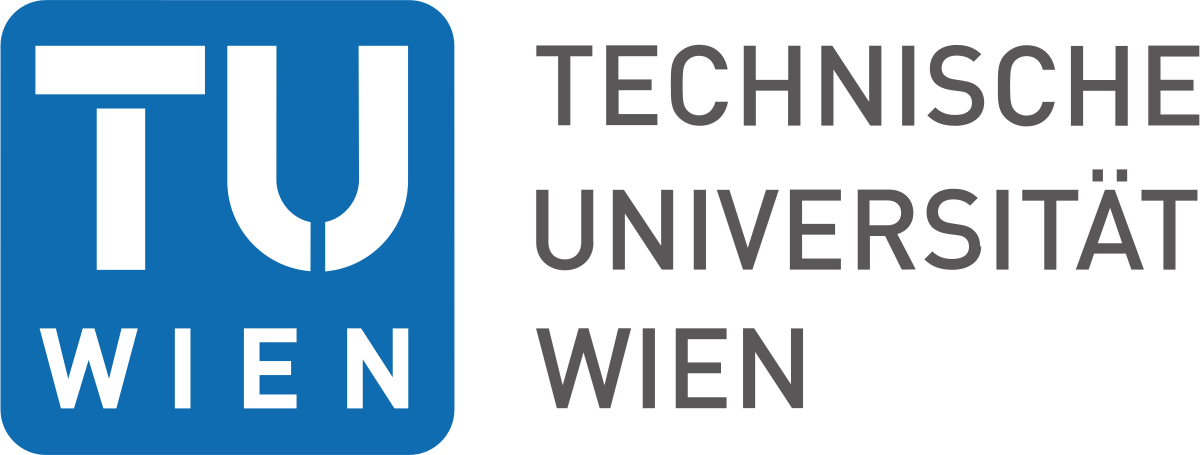




|

|

|

|
|
Seminar "Selected Topics in Mathematics"
Online edition
|
| Past talks: |
| 04 October 2023 (Wednesday, 4pm UTC+01:00) |
|
Prof. Pär Kurlberg,
KTH
Repulsion in number theory and physics ( Video link) Abstract. Zeros of the Riemann zeta function and eigenvalues of quantized chaotic Hamiltonians appears to have something in common. Namely, they both seem to be ruled by random matrix theory and consequently should exhibit "repulsion" in the sense that small gaps between elements are very rare. More mysteriously, while zeros of different L-functions (i.e., generalizations of the Riemann zeta function) are "mostly independent" they also exhibit subtle repulsion effects on zeros of other L-functions. We will give a survey of the above phenomena. Time permitting we will also discuss repulsion between eigenvalues of "arithmetic Seba billiards", a certain singular perturbation of the Laplacian on the 3D torus \(R^3/Z^3\). The perturbation is weak enough to allow for arithmetic features from the unperturbed system to be brought into play, yet strong enough to probably induce repulsion.
|
| 11 October 2023 (Wednesday, 4pm UTC+01:00) |
|
Prof. Sophie Morier-Genoud,
University of Reims
\(q\)-Analogs of rational numbers and the Burau representation of the braid group B3. ( Video link) Abstract. The most popular \(q\)-analogs of numbers are certainly the \(q\)-integers and the \(q\)-binomial coefficients of Gauss which both appear in various areas of mathematics and physics. Classical sequences of integers often have interesting \(q\)-analogs. With Valentin Ovsienko we recently suggested a notion of \(q\)-analogs for rational numbers. Our approach is based on combinatorial properties and continued fraction expansions of the rationals. The subject can be developed in connections with various topics such as enumerative combinatorics, cluster algebras, homological algebra, knots invariants... I will give an overview of the theory and present an application to the problem of classification of faithful specialisations of the Burau representation of B3. This last part is joint work with V. Ovsienko and A. Veselov.
|
| 18 October 2023 (Wednesday, 4pm UTC+01:00) |
|
Prof. Ekaterina Shemyakova,
University of Toledo
On super cluster algebras based on super Plücker and super Ptolemy relations ( Video link) Abstract. I will speak about super exterior powers and our results on super analogs of Plücker embedding for the Grassmann manifold. The problem was motivated by the search for the definition of super cluster algebras. Based on the obtained super Plücker relations (which we have for the general case), we propose a super cluster structure for super Grassmannians \(\mathrm{Gr}_{2|0}(n|1)\). The exchange graph structure is now understood. We show how to simplify the super Plücker relations for \(\mathrm{Gr}_{r|1}(n|1)\), which can be seen as dual to \(\mathrm{Gr}_{n-r|0}(n|1)\). We also present how super Ptolemy relations of Penner-Zeitlin for decorated super Teichmüller space --- the basis of Musiker-Ovenhouse-Zhang's super cluster algebra definition --- can be re-written as super Plücker relations. |
| 25 October 2023 (Wednesday, 4pm UTC+01:00) |
|
Prof. Alexander Esterov,
LIMS
Solvable systems of equations, Galois groups in enumerative geometry, and small lattice polytopes ( Video link) Abstract. The general polynomial of a degree higher than 4 cannot be solved by radicals. This classical theorem has a multidimensional version: solvable general systems of polynomial equations are in (almost) one-to-one correspondence with lattice polytopes of volume 4, and the latters admit a finite classification. In the narrow sense, I will talk about this xix-century-style result. In a broader sense, we shall look at the Galois groups of problems of enumerative geometry (such as Schubert calculus), and how their study leads to seemingly distant topics such as polyhedral geometry and braid groups.
|
| 01 November 2023 (Wednesday, 4pm UTC) |
|
Unfortunately this talk could not be completed due to technical difficulties. Therefore we will reschedule this talk for Spring 2024.
Prof. Herman Servatius, Worcester Polytechnic Institute Rigidity and movability of configurations in the projective plane Abstract. Configurations of points and lines in the plane have a long history. The Theorem of Pappus from the fourth century begins a classical theory that has been advanced by Desargues, Pascal, Cayley, Steinitz, Grassman and many others. The study of such objects and their generalizations has deep roots in algebra, geometry, topology and combinatorics. In this talk we discuss recent work which is the result of regarding these classical structures as geometric constraint systems. The objects of interest then become the topology, geometry, and parameterizations of the space of realizations of a configuration. Some of the tools derive from those developed by civil and mechanical engineers in the analysis of the statics of structures and the kinematics of linkages.
|
| 08 November 2023 (Wednesday, 4pm UTC) |
|
Prof. Victor Kleptsyn,
CNRS (Université de Rennes)
From the percolation theory to Fuchsian equations and Riemann-Hilbert problem ( Video link) Abstract. Consider the critical percolation problem on the hexagonal lattice: each of (tiny) hexagons is independently declared « open » or « closed » with probability (\(1/2\)) — by a fair coin tossing. Assume that on the boundary of a simply connected domain four points A,B,C,D are marked. Then either there exists an « open » path, joining AB and CD, or there is a « closed » path, joining AD and BC (one can recall the famous « Hex » game here). Cardy's formula, rigorously proved by S. Smirnov, gives an explicit value of the limit of such percolation probability, when the same smooth domain is put onto lattices with smaller and smaller mesh. Though, a next natural question is: what if more than four points are marked? And thus that there are more possible configurations of open/closed paths joining the arcs? In our joint work with M. Khristoforov we obtain the answer as an explicit integral for the case of six marked points on the boundary, passing through Fuchsian differential equations, Riemann surfaces, and Riemann-Hilbert problem. We also obtain a generalisation of this answer to the case when one of the marked points is inside the domain (and not on the boundary). |
| 15 November 2023 (Wednesday, 4pm UTC) |
|
Prof. Iván Rasskin,
Aix-Marseille University
On the arithmetic and geometric properties of regular polytopal sphere packings and their connection to knot theory ( Video link) Abstract. The Apollonian Circle Packing (ACP) is a classic geometric fractal with diverse applications across various domains, particularly in number theory. This is due to its ability to be realized as an integral packing, where the curvatures of all the circles are integers. The ACP is constructed iteratively, beginning with an initial packing whose combinatorial structure is encoded by a tetrahedron. By changing the initial configuration, the ACP can be generalized for any polyhedron. However, not every polyhedron is integral in the sense that it can generate an integral packing. Moreover, in higher dimensions, not every polytope is crystallographic, meaning that it can generate an Apollonian-like sphere packing. In this talk, we will study the case of regular polytopes in any dimension to determine whether they are integral and crystallographic. Additionally, we will explore how the symmetry inherent in the polytope can be leveraged to extract special cross-sections of the packings. Furthermore, we will demonstrate how a specific section of an orthoplicial/hyperoctahedral Apollonian sphere packing can be utilized as a geometric framework to establish an upper bound on a knot invariant for rational links.
|
| 22 November 2023 (Wednesday, 4pm UTC) |
|
Prof. Jeffrey Shallit,
University of Waterloo
Proving results in combinatorics on words and number theory using a decidable logic theory ( Video link) ( Notes) Abstract. David Hilbert's dream, of a deterministic finite procedure that could decide if a given theorem statement is true or false, was killed off by Gädel and Turing. Nevertheless, there are some logical theories, such as Presburger arithmetic, that are decidable. In this talk I will discuss one such theory, Büchi arithmetic, and its implementation in a computer system called Walnut. With this free software, one can prove non-trivial theorems in combinatorics on words and number theory; it suffices to state the desired result in first-order logic, type it into the system, and wait. So far, it has been used in over 70 papers in the literature, and has even detected errors in some published papers. My recent book, The Logical Approach to Automatic Sequences, published by Cambridge University Press, has more details. |
| 29 November 2023 (Wednesday, 4pm UTC) |
|
Prof. Fran Burstall,
University of Bath
Isothermic surfaces and Noether's theorem ( Video link) Abstract. Isothermic surfaces were intensively studied in the late 19th century and have seen a recent revival of interest due to links with soliton theory. In this talk, I will describe this classical theory and the modern integrable systems approach via a pencil of flat connections. I will explain how this connections arise from a variational characterisation of isothermic surfaces, due to Bohle-Peters-Pinkall, together with Noether's theorem. This gives a puzzling link to the conservations laws for CMC surfaces discovered by Korevaar-Kusner-Solomon.
|
| 06 December 2023 (Wednesday, 4pm UTC) |
|
Prof. Derek Kitson,
Mary Immaculate College
Rigid graphs in dimension 3 ( Video link) Abstract. A graph is rigid in \(d\)-dimensional Euclidean space if there is an embedding of the vertices which admits no non-trivial edge-length preserving continuous motion. Rigid graphs in dimensions \(1\) and \(2\) are characterised by simple counting rules, but currently no such rules are available in higher dimensional Euclidean spaces. We will provide a gentle introduction to graph rigidity and report on recent progress in characterising rigid graphs for a class of cylindrical normed spaces of dimension \(3\). This is joint work with Sean Dewar (University of Bristol).
|
| 13 December 2023 (Wednesday, 4pm UTC) |
|
Prof. Vladlen Timorin,
Higher School of Economics
Aperiodic points for outer billiards ( Video link) Abstract.
This is a joint project with A. Kanel-Belov, Ph. Rukhovich, and V. Zgurskii. A Euclidean outer billiard on a convex figure in the plane is the map sending a point outside the figure to the other endpoint of a segment touching the figure at the middle. Iterating such a process was suggested by J. Moser as a crude model of planetary motion. Polygonal outer billiards are arguably the principal examples of Euclidean piecewise rotations, which serve as a natural generalization of interval exchange maps. They also found applications in electrical engineering. Previously known rigorous results on outer billiards on regular \(N\)-polygons are, apart from
|
| Go to the main page. |